Ronda – a picturesque mountain town

Author: Eve Keerus-Jusupov, CEO of Merlis Homes SL.
Helping you navigate Costa del Sol property with confidence and peace of mind.
Have a question? Contact me via WhatsApp
Ronda is a picturesque mountain town located about 105 km west of Málaga in Andalusia. The town has approximately 35,000 residents and attracts many tourists.
Ronda is situated in a mountainous area approximately 750 m above sea level. The Guadalevín River flows through the town, dividing it in two and carving out the steep, over 100-meter-deep El Tajo canyon, above which the town is perched.
The town has three bridges over the Tajo canyon:
- Puente Romano “Roman Bridge” (the foundation is from Roman times but rebuilt by the Arabs)
- Puente Viejo “Old Bridge”
- Puente Nuevo “New Bridge” (built between 1751 – 1793). Puente Nuevo is the highest of the bridges, rising 120 m above the canyon floor.
History
In the surrounding area, there are remains of prehistoric settlements from the Neolithic period, including the cave paintings of Cueva de la Pileta. The town was called Arunda by the Celts in the 6th century BC. Present-day Ronda has Roman origins and was granted city status during the time of Julius Caesar.
Ronda has a colorful history, having been conquered multiple times by different leaders. Therefore, Ronda’s architecture features Islamic heritage and Christian buildings.
During the Spanish Inquisition, Muslims sought refuge in Ronda. In 1566, Philip II declared the use of the Arabic language illegal (both in writing and speech), demanded that doors be left open on Fridays to check for Muslim Friday prayers, and imposed heavy taxes on them.
During Napoleon’s invasion and the subsequent Peninsular War, Ronda’s population dropped from 15,600 to 5,000 in three years. The Ronda area first became a base for guerrilla fighters and then for numerous bandits. A few years ago, Ronda had a bandit museum that showcased the history of the area’s most famous outlaws through photos and documents. It is currently closed.
The Romero family from Ronda introduced innovations in bullfighting, such as the use of the cape (muleta) and the special sword for killing the bull (estoque).
“Corrida Goyesca” is a bullfight held annually in Ronda at Plaza de Toros de Ronda, the oldest bullring in Spain. It was built in 1784 by architect José Martin de Aldehuela, who also designed the Puente Nuevo bridge.
Ronda as the source of inspiration
In 1994, Madonna filmed her music video for “Take a Bow” at the Salvatierra Marquee Palace in Ronda.
Italian designer Giorgio Armani designed a bullfighting costume named “Goyesco” for the famous bullfighter Cayetano Rivera Ordóñez in 2009.
Several creative individuals have written about and described Ronda in their works, including Ernest Hemingway, Orson Welles, Rainer Maria Rilke, and George Eliot.
You can also see Ronda in the 2017 animated film “Ferdinand.”
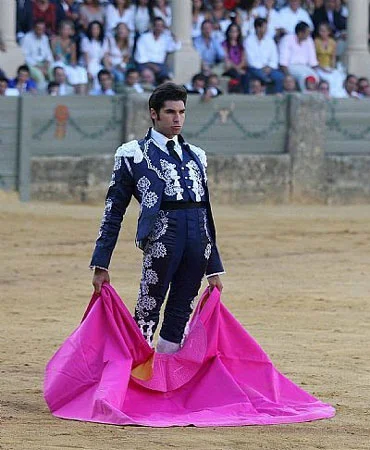
What to visit in Ronda?
- Ronda Viewpoint, offering a view of the surrounding area.
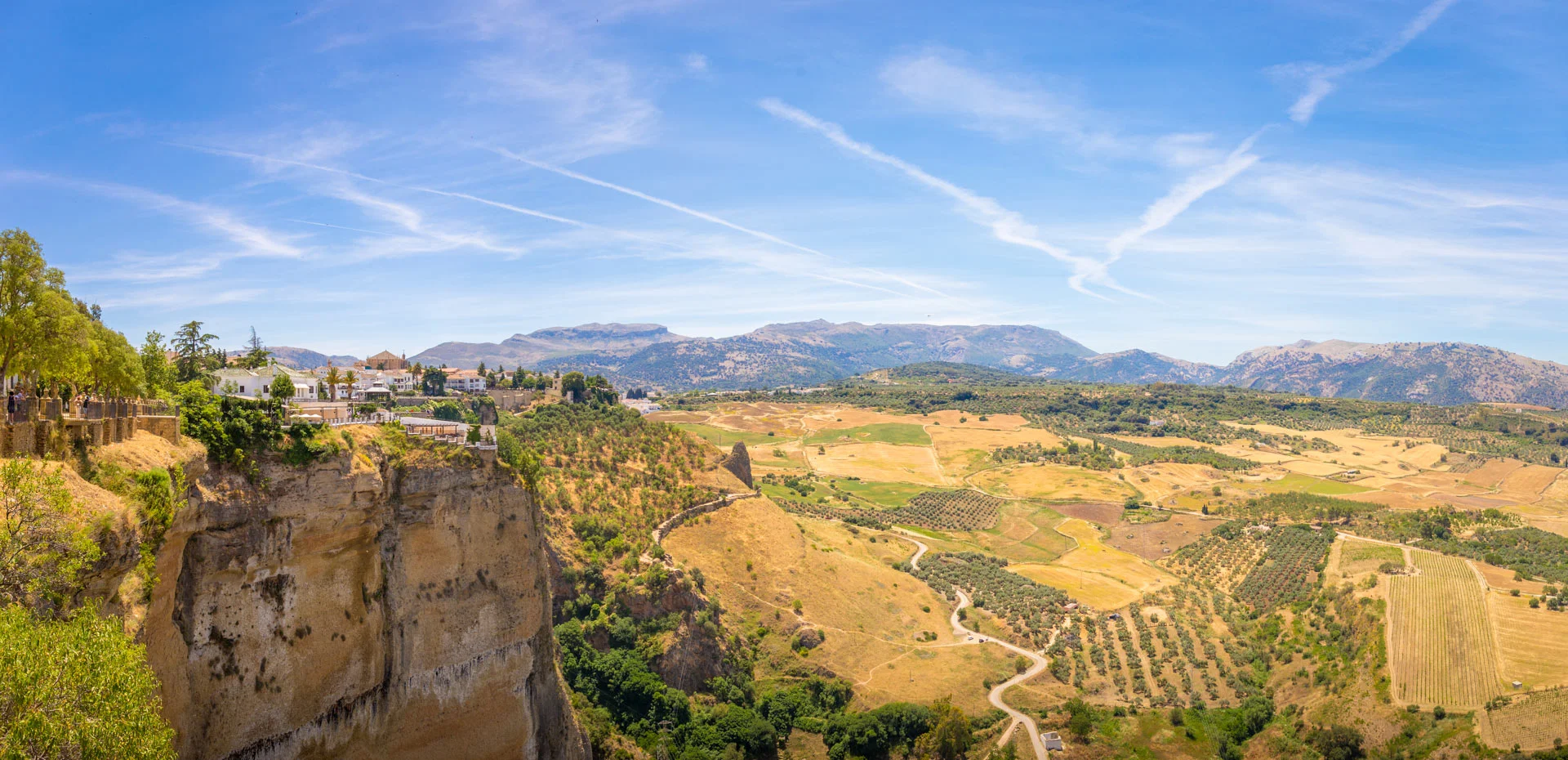
- Puente Nuevo Bridge – view from below.
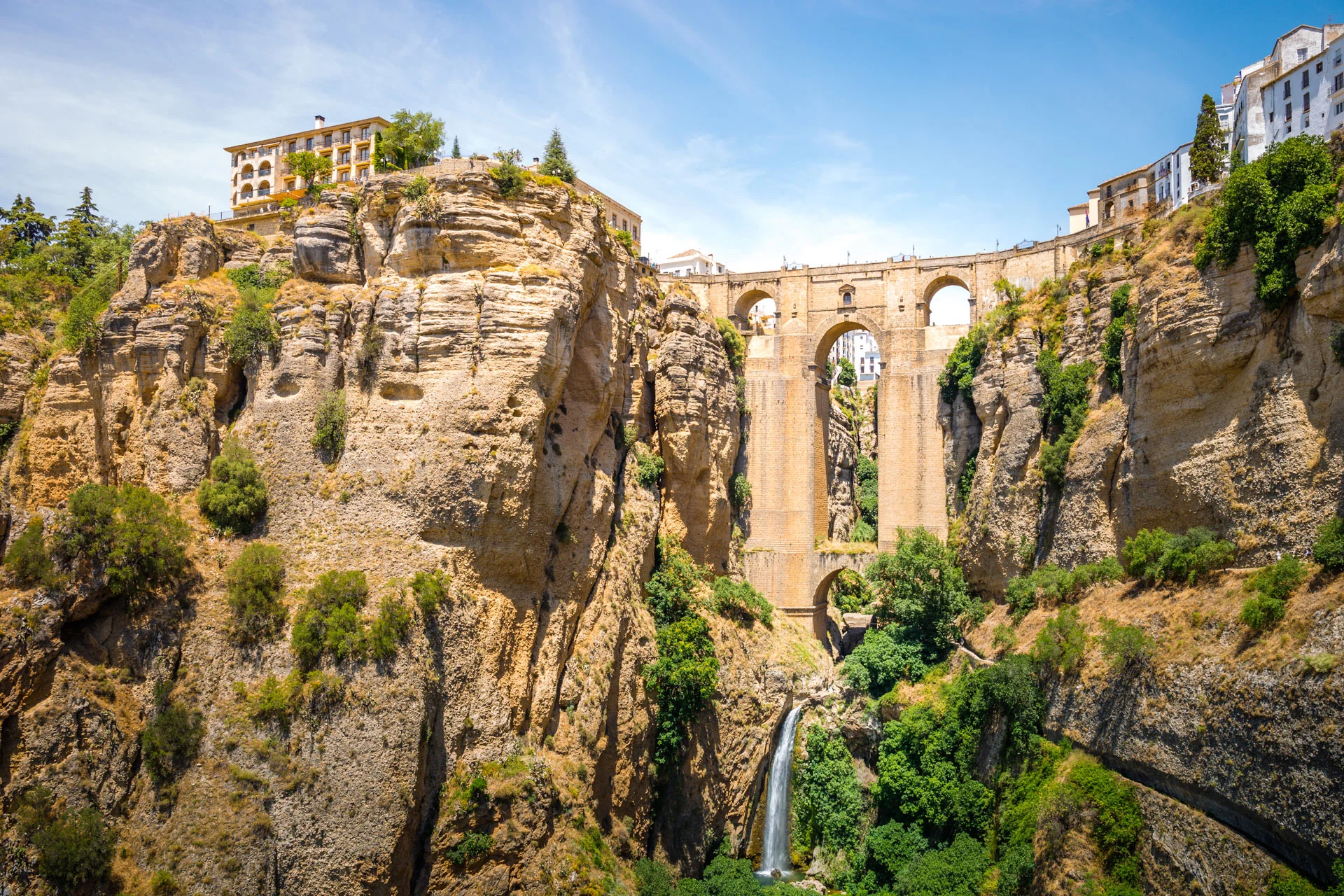
- Mondragon Palace, built in 1314. It currently houses the Ronda City Museum. You can also visit the palace gardens, which offer a beautiful view of the old town.Plaza Duquesa de Parcent. The square is surrounded by several buildings, including the town hall and the church of Santa María la Mayor. The construction of this church lasted almost 200 years and represents a mix of Renaissance and Gothic styles with Baroque elements.
Almocabar Gate. During the Muslim period, Puerta de Almocabar was the main entrance and the largest gate of the city, surrounded by two semicircular defensive towers.
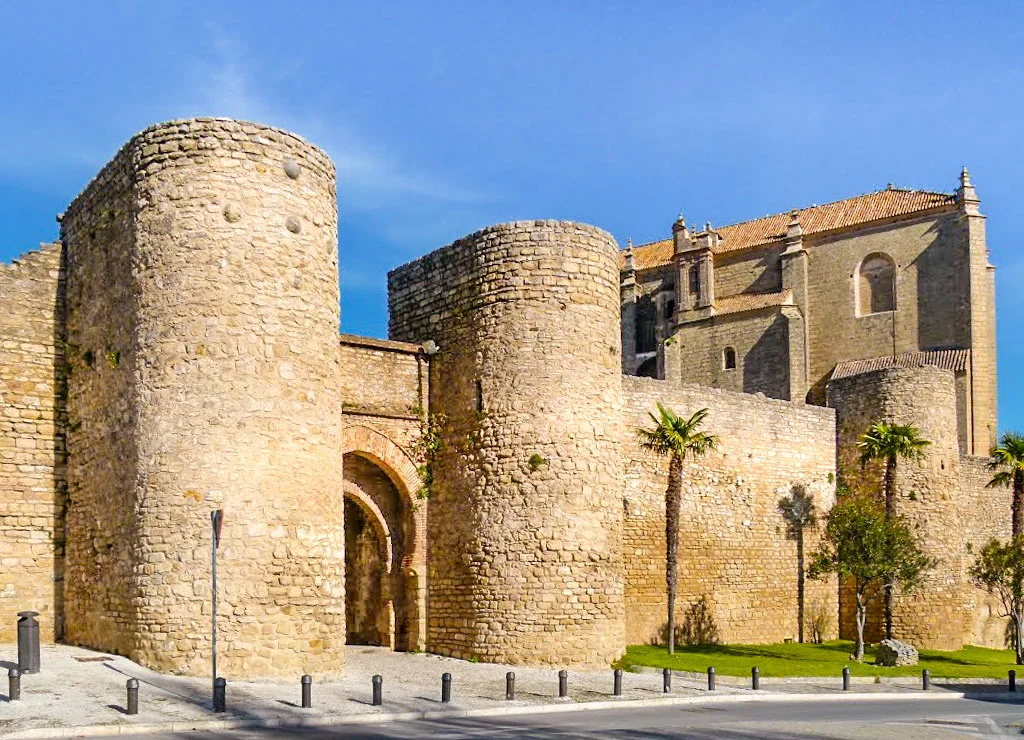
- Arab Baths, located in the San Miguel district. These were built in the late 13th century and are laid out like Roman baths, with cold, warm, and hot zones. Surprisingly, the hydraulic system is almost intact to this day. The boiler used to heat the water is still visible, and the ceiling has star-shaped ventilation openings.
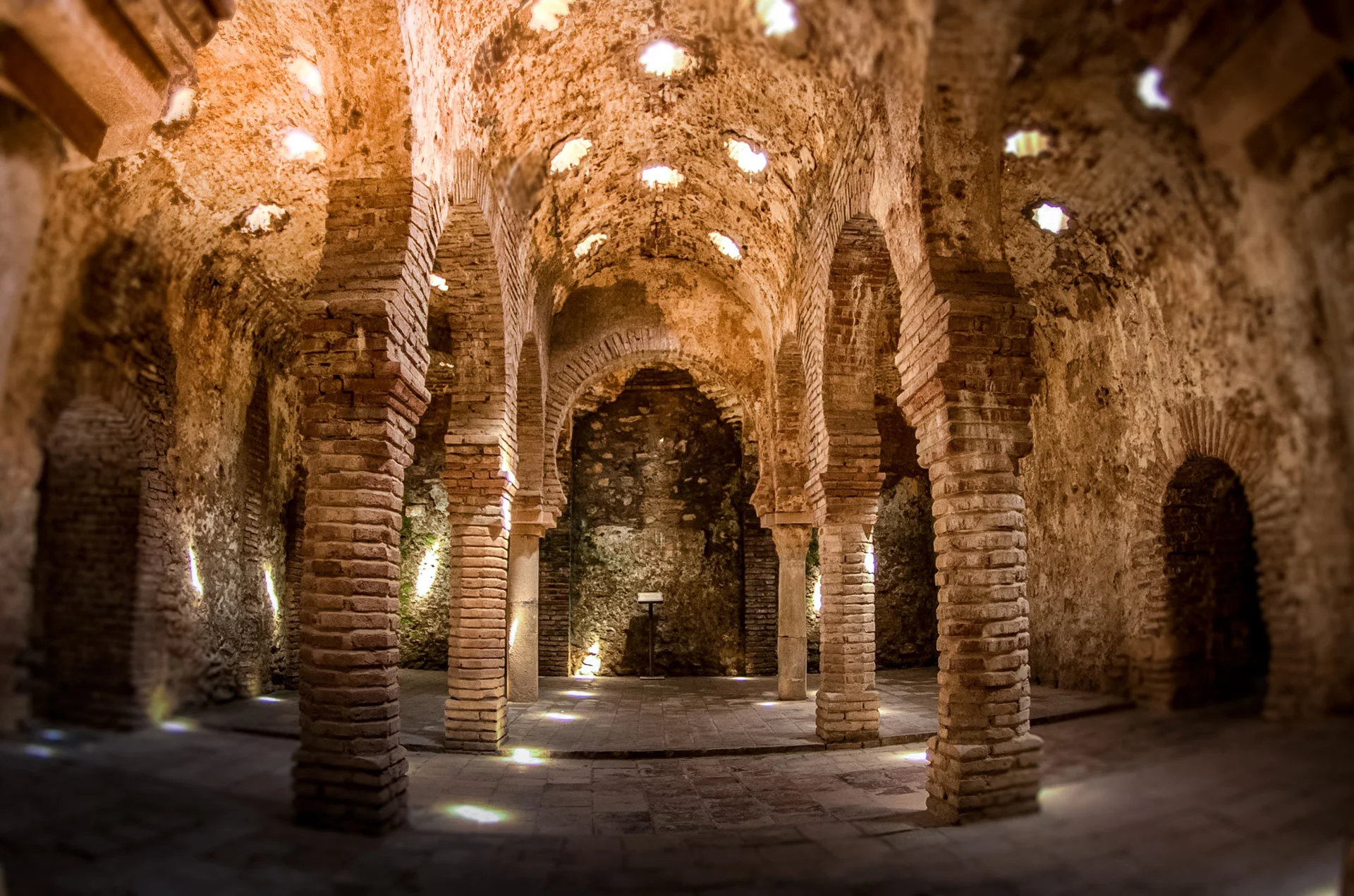
- La Casa del Rey Moro (Palace of the Moorish King). Located on Calle Cuesta de Santo Domingo, the palace was built by the Moors in the 14th century. You can descend a staircase carved into the rock, consisting of 236 steps that reach 60 meters down and open to a viewpoint. In ancient times, slaves would go up and down these steps daily to fetch water.
- El Tajo Canyon Trail. If you’re adventurous and love climbing and beautiful views, El Tajo Canyon Trail is for you.
Wine Route
Ronda has recently been added to the official list of Andalusian wine routes. In many small bodegas hidden in nature, excellent wines are produced. We have yet to visit these wine estates, but Descalzos Viejos and Milamores near Ronda caught our eye. I will update this piece once we have visited them.
Until then, all the best!



